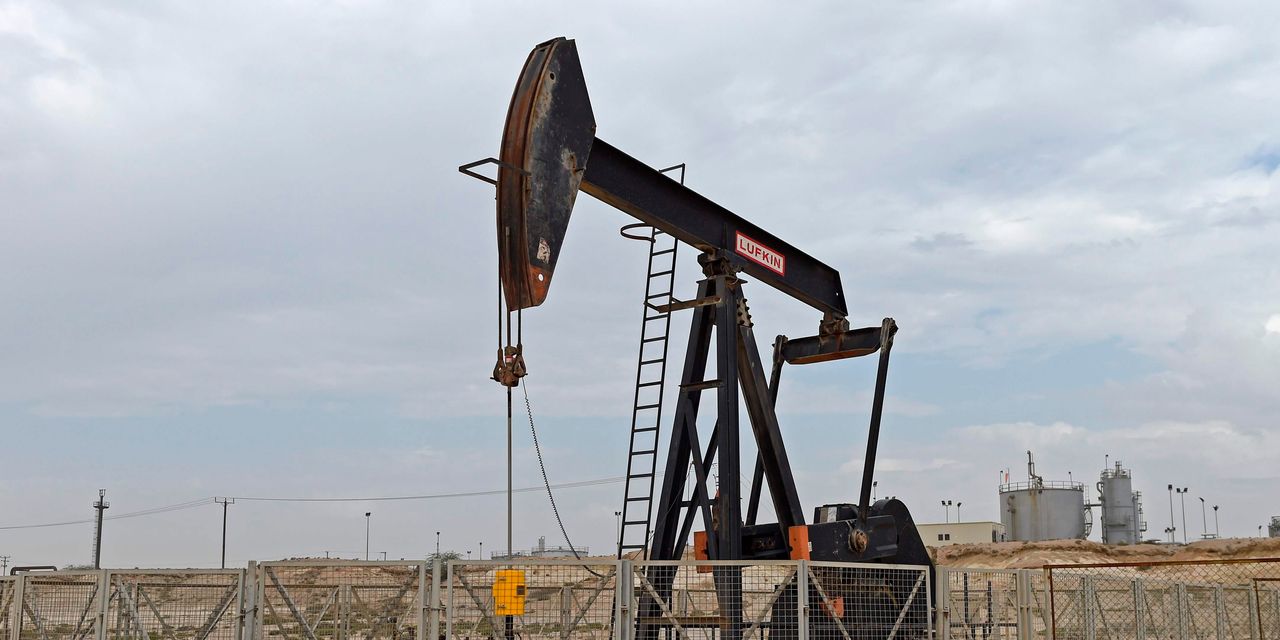
Oil futures traded mostly higher on Tuesday, finding support on expectations for another decline in U.S. crude inventories, though worries over the spread of the delta variant of the coronavirus that causes COVID-19 continued to limit upside, analysts said.
“Supply continues to fall short of global demand that is recovering even amid a resurgence of COVID-19 cases in key regions,” said Robbie Fraser, global research & analytics manager at Schneider Electric, in a daily note.
Inventory data due later this week is expected to “confirm those conditions with another strong draw for U.S. crude stocks,” he said.
Still, uncertainty around production by the Organization of the Petroleum Exporting Countries and its allies — a group known as OPEC+ — “continues to complicate the global supply outlook in the coming months,” said Fraser.
West Texas Intermediate crude for August delivery CL00, -0.23% CLQ21, -0.23% was up 7 cents, or less than 0.1%, at $74.15 a barrel on the New York Mercantile Exchange, though seesawed between minor gains and losses in Tuesday dealings.
September Brent crude BRN00, +0.08% BRNU21, +0.08%, the global benchmark, gained 23 cents, or 0.3%, to $75.39 a barrel on ICE Futures Europe after touching intraday lows under the $75 mark.
The International Energy Agency, in its monthly report, said rising coronavirus cases and its potential impact on the long-planned easing of pandemic restrictions in several wealthy countries made it harder to gauge future demand.
“While there is uncertainty over OPEC+, there are also concerns over demand, given the growing number of COVID-19 cases in several regions as the delta variant spreads,” said Warren Patterson, head of commodities strategy at ING, in a note.
A continued stalemate over OPEC+ production was also contributing to uncertainty, the IEA said.
The Paris-based watchdog made only minor adjustments to its headline forecasts, leaving its outlook for global oil-demand in 2021 unchanged and trimming its growth estimates for next year by 100,000 barrels a day to 3 million barrels a day.
The IEA raised its forecast for non-OPEC supply growth this year by 60,000 barrels to 770,000 barrels a day and maintained its forecast growth of 1.6 million barrels a day for next year. The IEA said that it expects around a million barrels of that 2022 growth to come from the U.S., where producers have focused more on promises to return cash to investors than increasing production.
The organization said that if OPEC+ cannot reach a supply agreement, the crude market faces “the prospect of a deepening supply deficit.” Talks aimed at boosting production fell apart earlier this month after the United Arab Emirates insisted it should be able to pump more crude than allowed under OPEC+’s existing output agreement.
In One Chart: OPEC oil stalemate — why U.A.E. is blocking a deal
Meanwhile, in Asia, where COVID vaccination rates remain relatively low, more governments are tightening restrictions in a bid to slow the spread, Patterson said.
“The market has held an optimistic view on the demand recovery, but clearly, there are some very real risks that the recovery will not be as quick as many in the market had anticipated,” he said.
Data on U.S. crude inventories is also on traders’ radar. The American Petroleum Institute, an industry group, will report its weekly inventories data late Tuesday, while official data from the Energy Information Administration is due Wednesday morning.
The EIA is expected to report a fall in domestic crude stocks for an eighth straight week. Analysts surveyed by S&P Global Platts, on average, look for the EIA data to show a 4.9 million barrel draw to U.S. crude inventories for the week ended July 9, which would mark the eight straight weekly decline.
The survey also show forecasts an inventory decrease of 1.6 million barrels for gasoline and increase of 1.3 million barrels for distillates, which include heating oil.
On Nymex Tuesday, August gasoline RBQ21, +0.14% rose 0.5% to $2.29 a gallon and August heating oil HOQ21, +0.19% tacked on 0.3% to nearly $2.16 a gallon.
Natural-gas futures, meanwhile, moved lower after posting a gain of 2% on Monday. August natural gas NGQ21, -1.52% fell 1.8% to $3.68 per million British thermal units.





